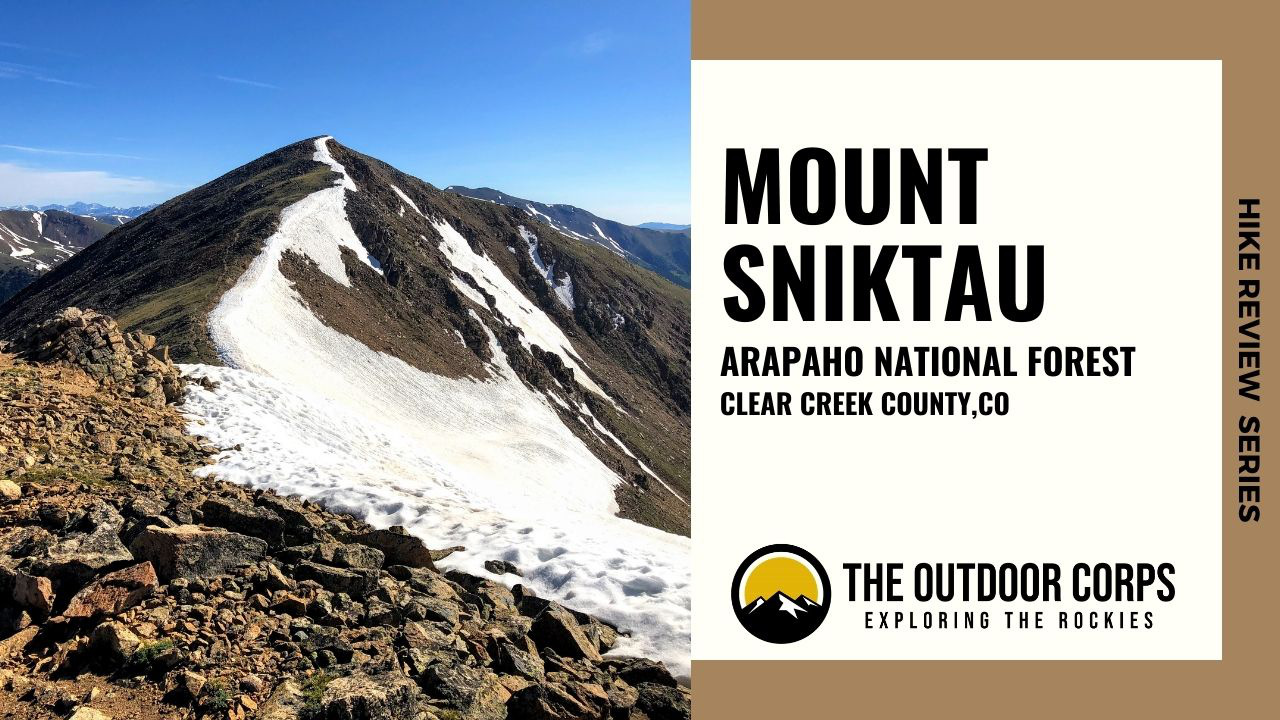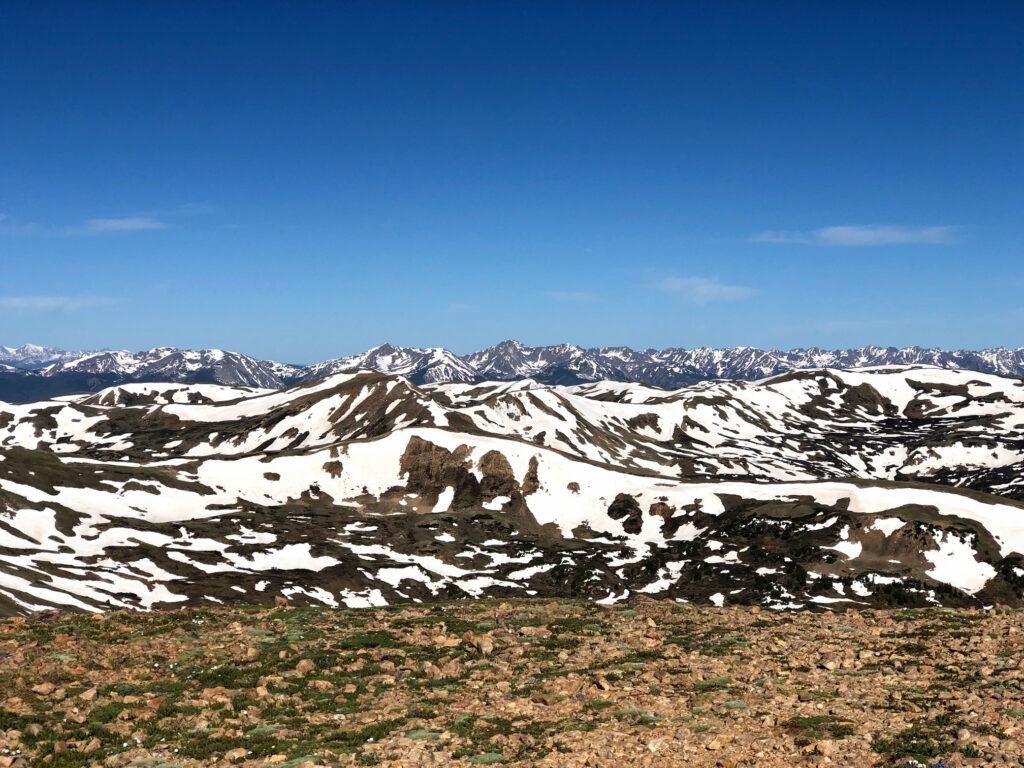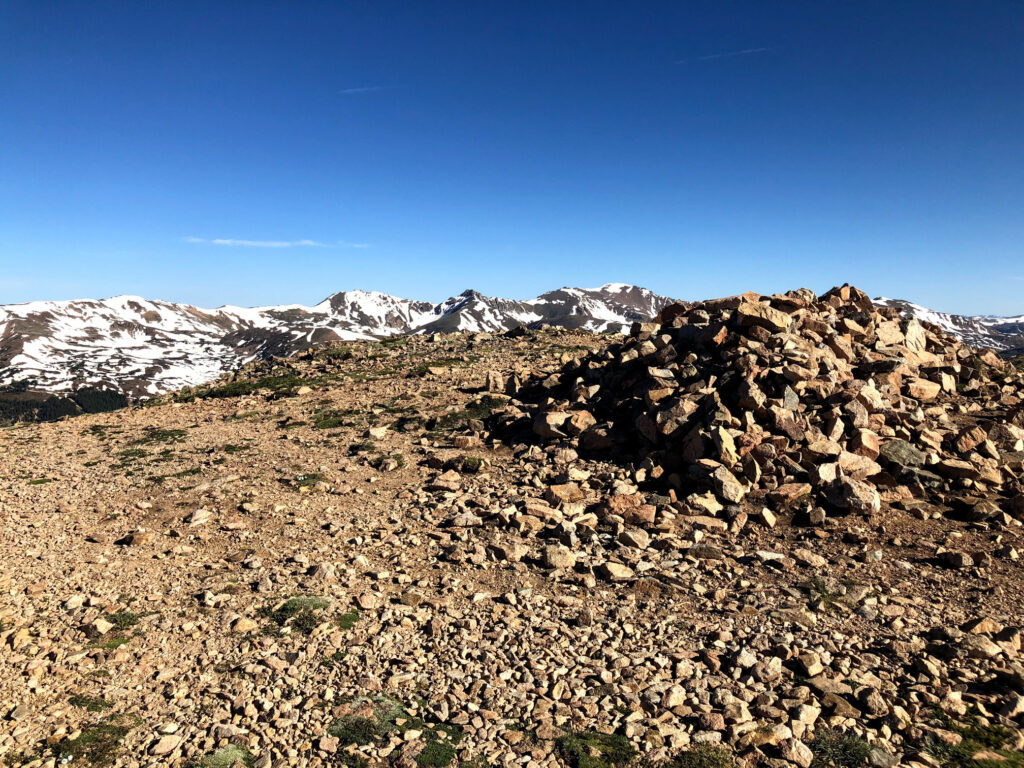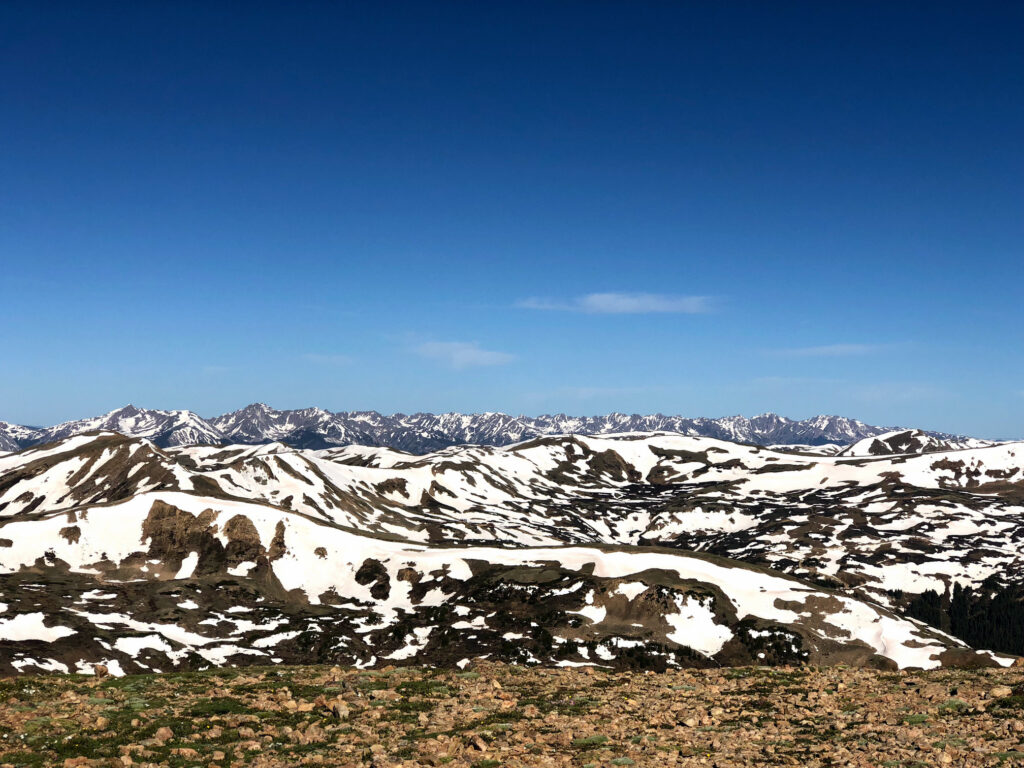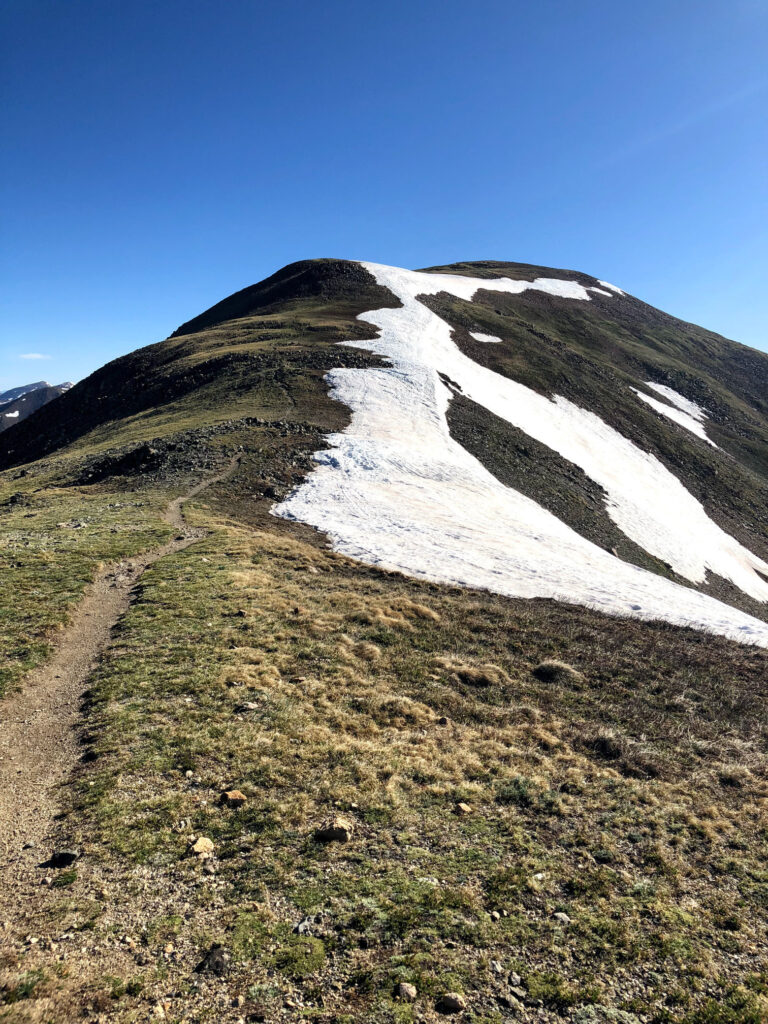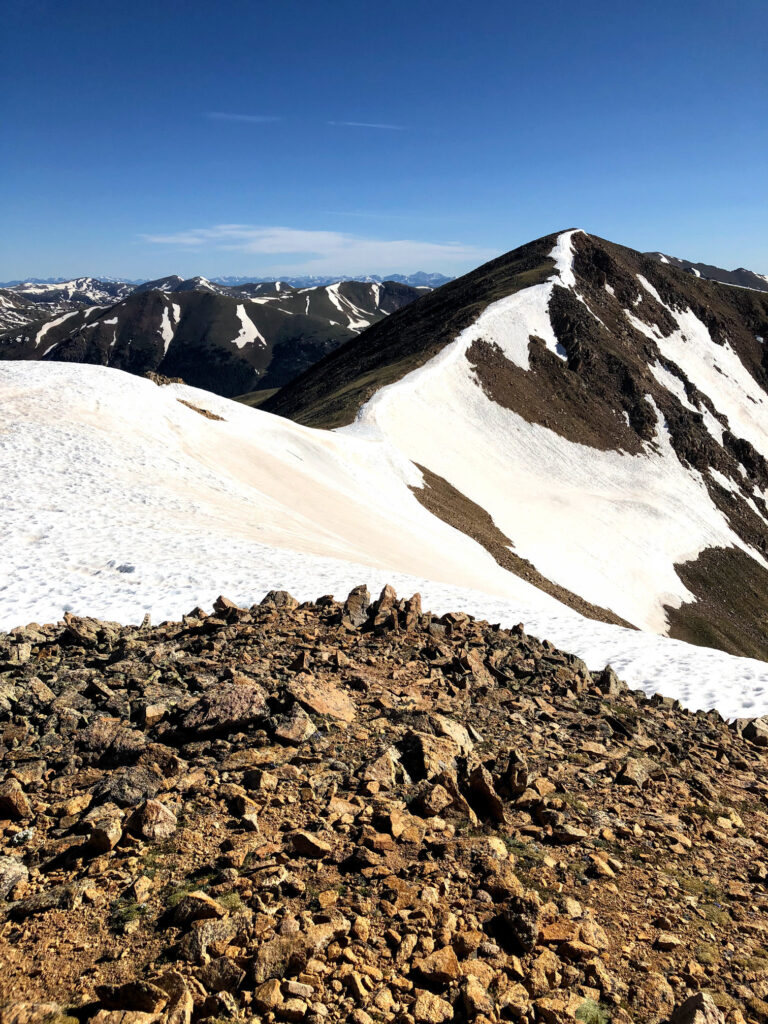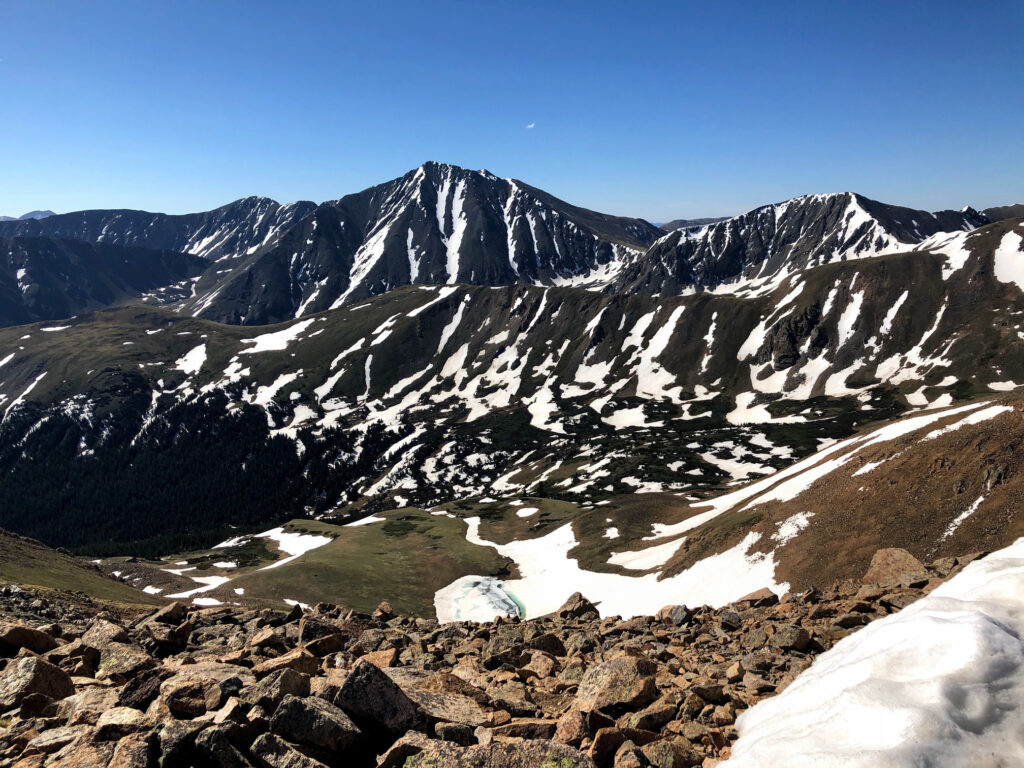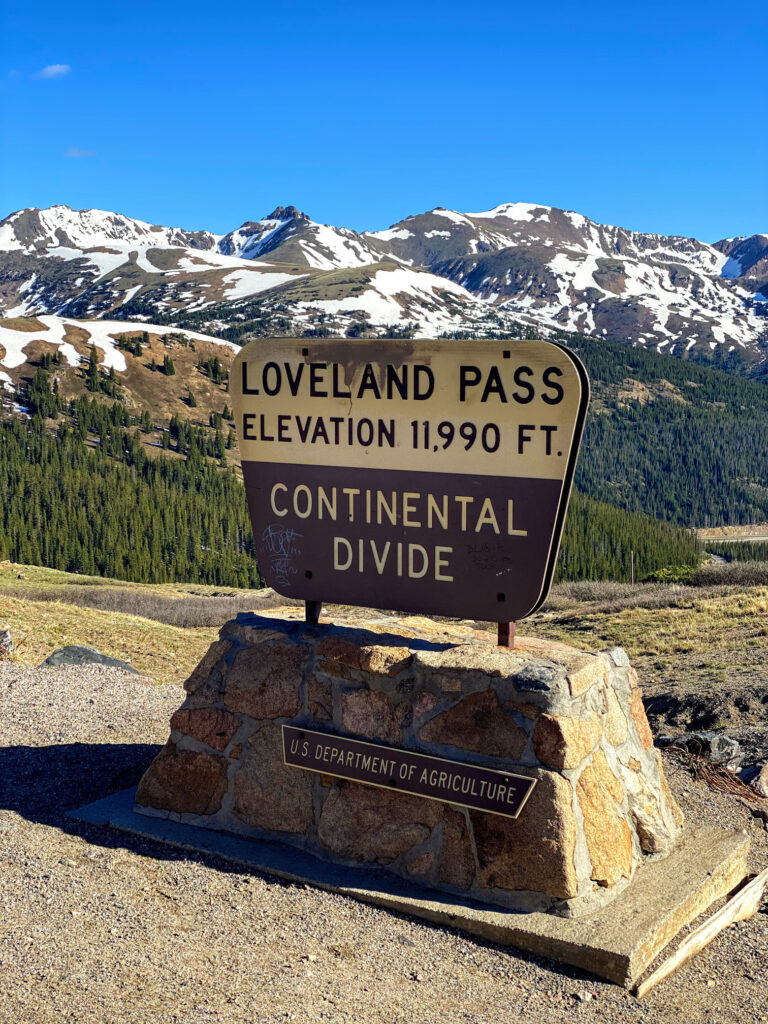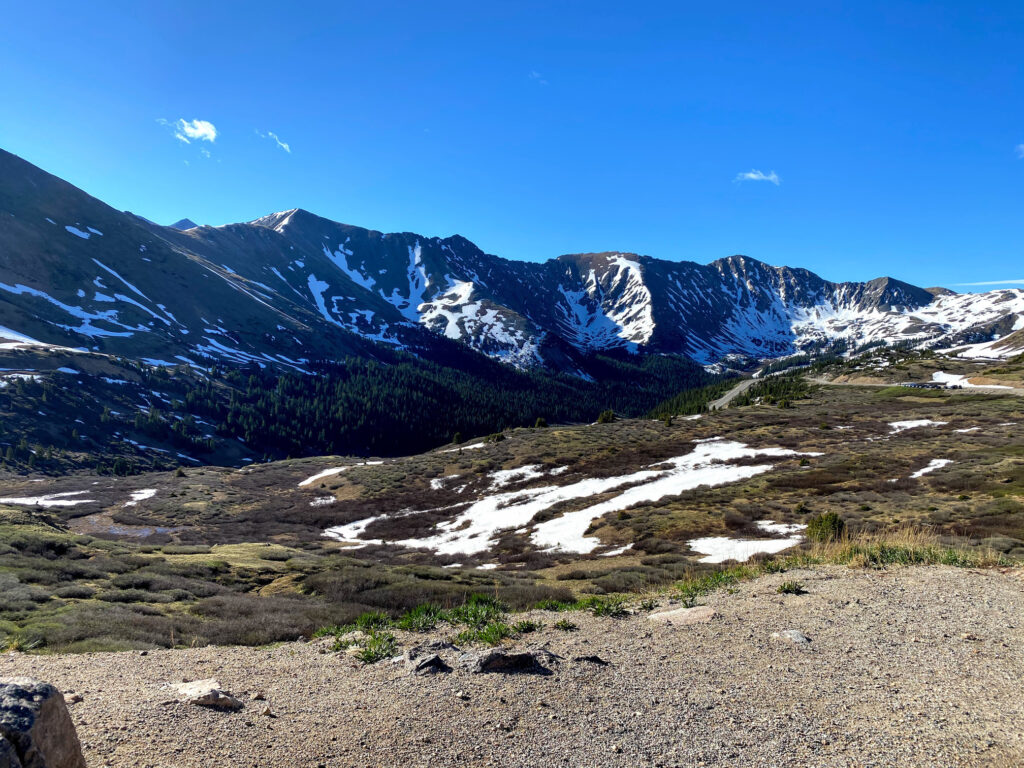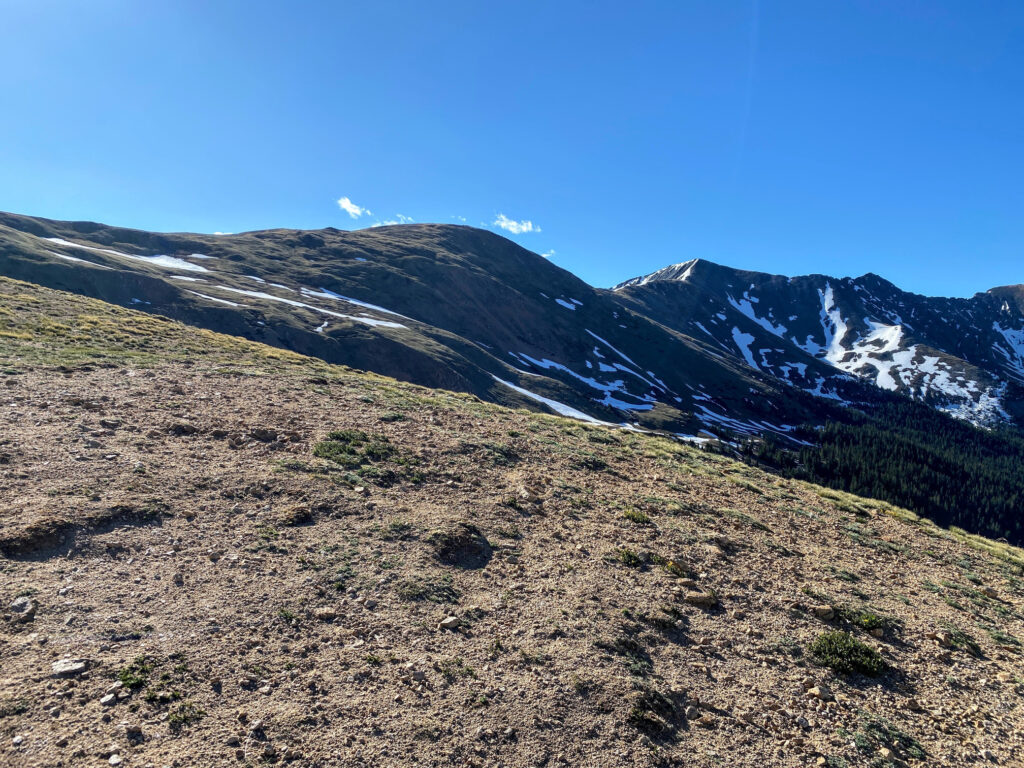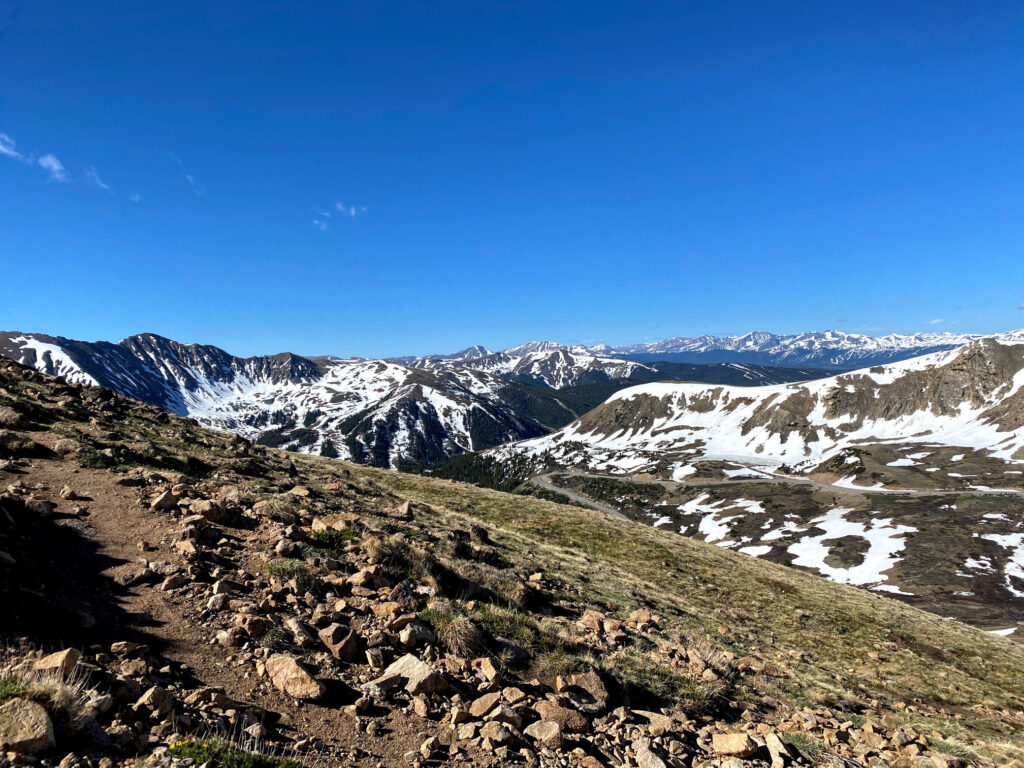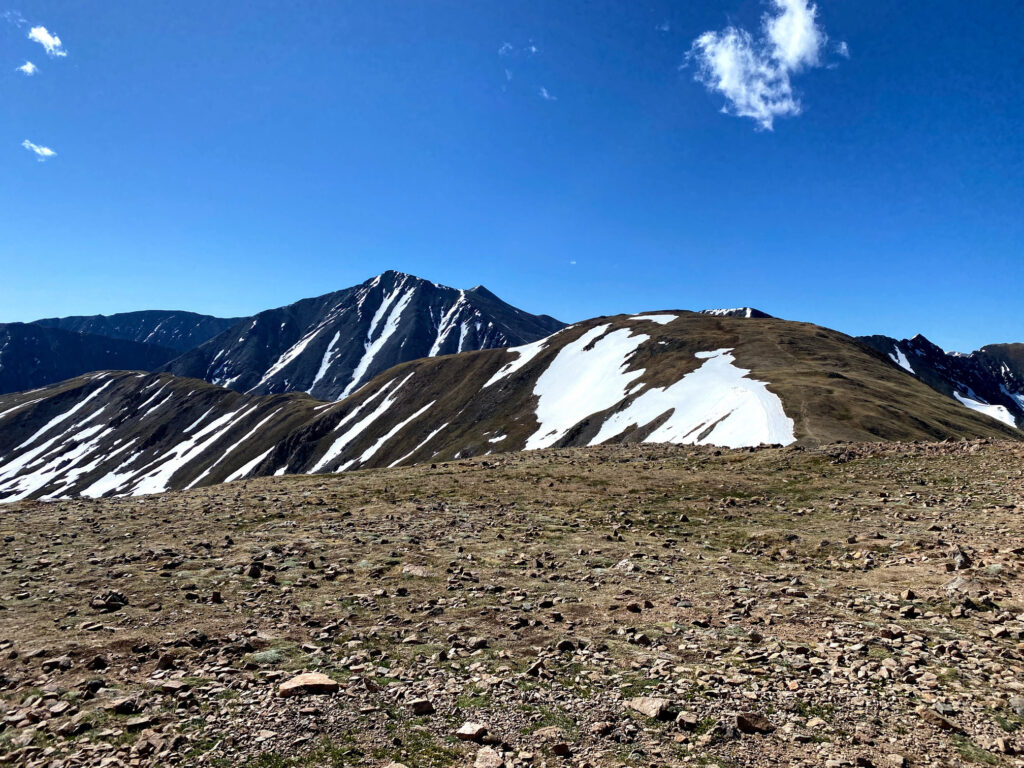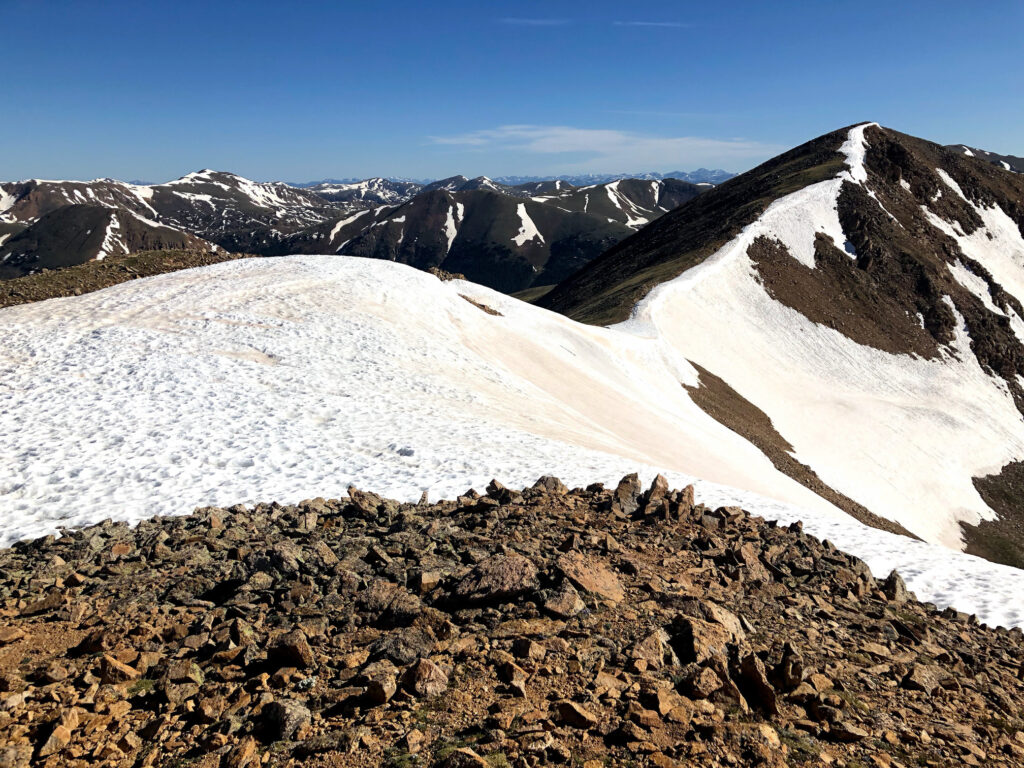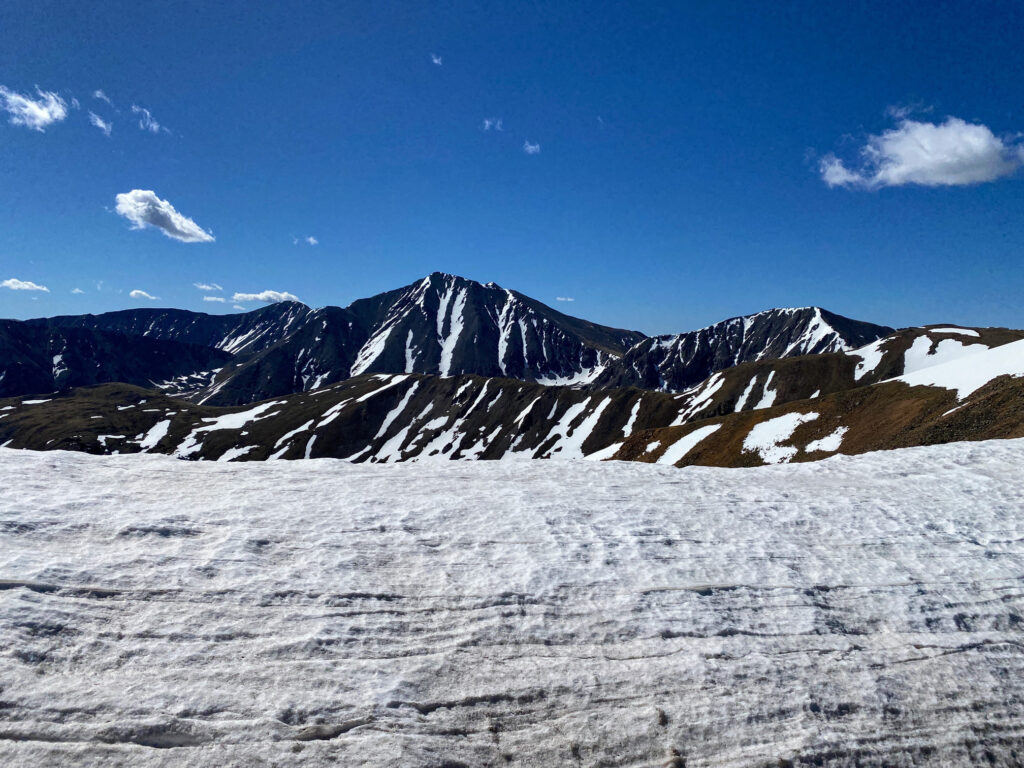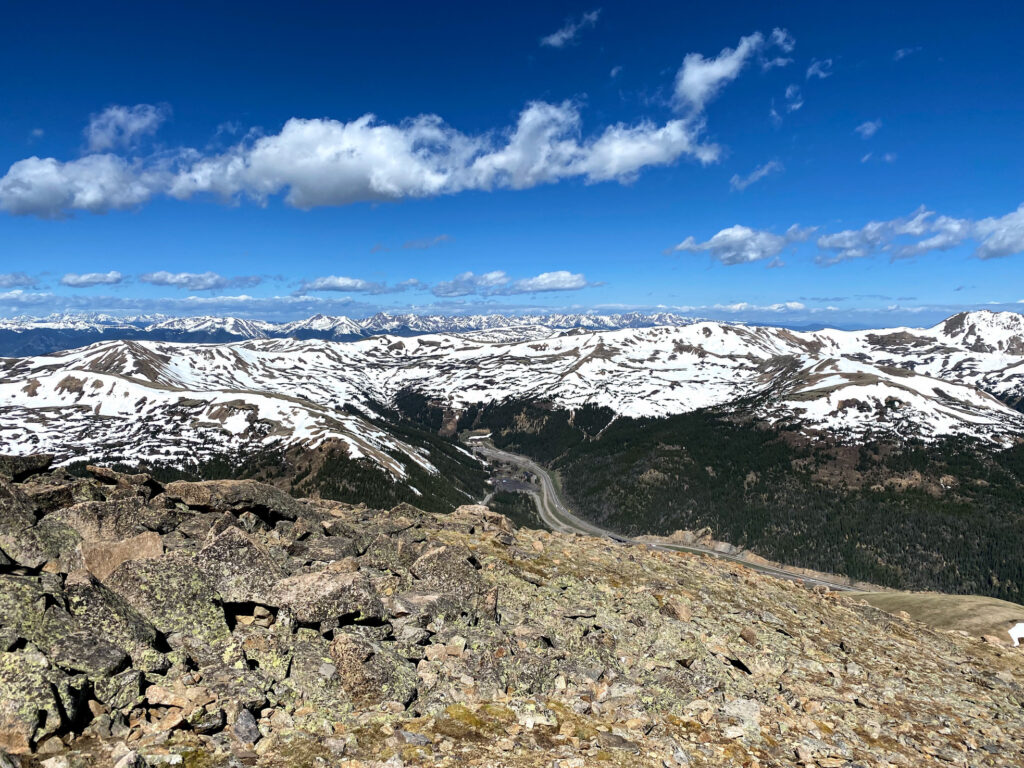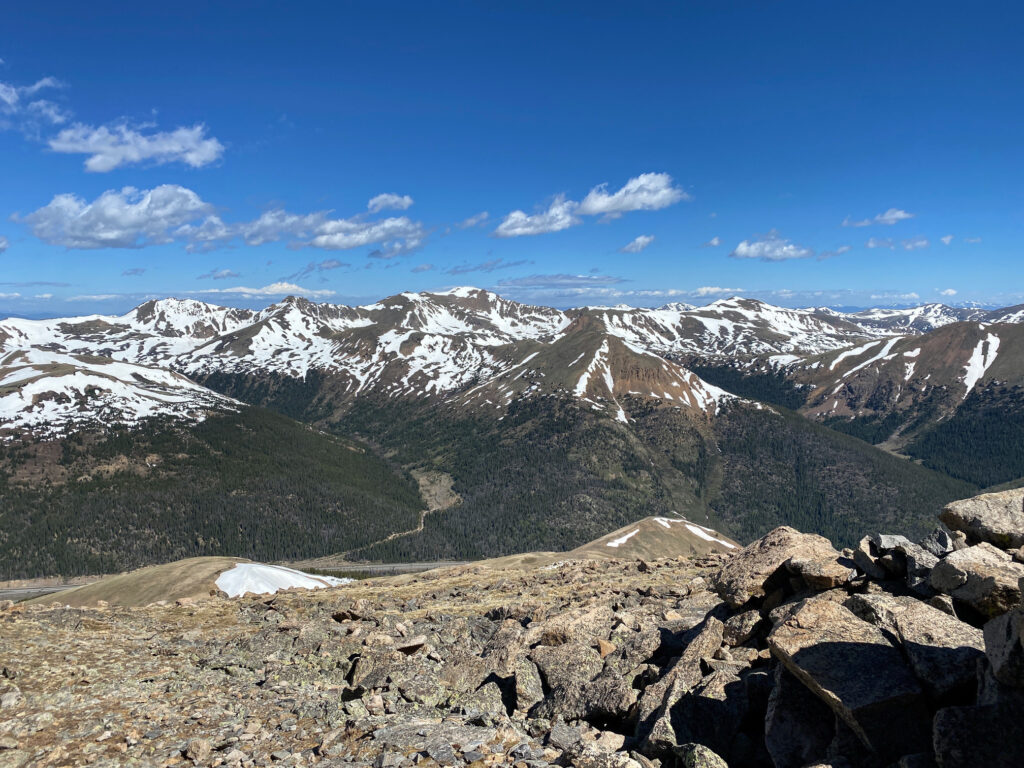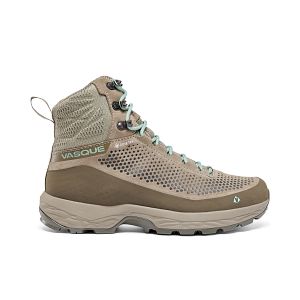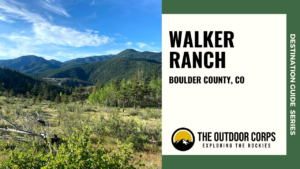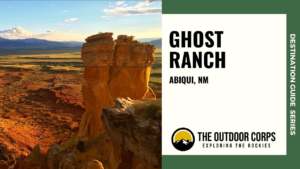Mount Sniktau (13,240ft.) is a 13er mountain located in Colorado’s central Front Range, within the Arapaho National Forest. Located on the Continental Divide at Loveland Pass, Mount Sniktau is extremely close to Loveland Ski Area and Arapahoe Basin Ski Area and offers an excellent introduction to 13er hiking. Indeed, an adventure to the summit of Mount Sniktau is very straightforward and relatively easy in comparison to many other Colorado 13er and 14er mountains.
The standard route to the summit of Mount Sniktau is via its Southwest Ridge. The route begins at the parking area off of the east side of Loveland Pass Road (US-6), right at Loveland Pass. At 3.7 miles roundtrip, with approximately 1,250ft of elevation gain, the hike is mostly along a Class 1 trail with a small bit of scrambling at the summit. If you’re looking for a longer hike and bigger challenge, consider adding in nearby 13,427ft. Grizzly Peak.
HIKE REVIEW SERIES: Mount Sniktau
Mountain Information
Mount Sniktau, located in Colorado’s Arapaho National Forest, is named after Edwin H. N. Patterson, who was a notable Colorado journalist, editor, and friend of author Edgar Allen Poe. In 1875, Patterson became editor of the “Colorado Miner” magazine in Georgetown, CO. On occasion, Patterson would use the pen name of Sniktau, which he had said was bestowed upon him by Native Americans. However, others have inferred that Patterson took the pen name from another journalist, W. F. Watkins, who went by Sniktaw (a reverse spelling of Watkins).
Either way, Mount Sniktau is named in honor of Patterson’s pen name and his contributions to Colorado history. At an elevation of 13,240ft., Mount Sniktau is an incredibly popular 13er given its location on the Continental Divide and proximity to the Denver metro area.
Mount Sniktau
- Summit Elevation: 13,240ft.
- Range: Front
- Sub-Range: Central Front
- Location: Arapaho National Forest
- Nearest Town: Silver Plume
Trail Guide
Route Information
- Route: Southwest Ridge
- Class: 1
- Type: Out-and-Back
- Trailhead: Loveland Pass
- Trailhead Elevation: 11,990ft.
- Route Length: 3.6 miles
- Elevation Gain: 1,250ft.
Route Overview
The Class 1 Southwest Ridge route to Mount Sniktau begins at the top of Loveland Pass, across the road from the Continental Divide sign on Loveland Pass Road (US-6). The trailhead has a parking area for about 30-40 vehicles, but given the close proximity to the Denver area, only the earliest of arrivals are likely to secure a parking spot here during peak season (and even during winter when backcountry skiing is popular).
From the Loveland Pass parking area, the route is almost completely along a Class 1 trail, save for some simple scrambling to Mount Sniktau’s summit. At about 1.0 mile into the hike along the Mount Sniktau Trail, a junction is reached with the Mount Sniktau Trail heading to the left and the Grizzly Peak Trail heading to the right. Head left to continue the ascent toward Mount Sniktau for about another 1.0 mile and scramble up to the summit for some amazingly vast views.
Planning Tips
Getting There
From I-70, take exit 216 for US-6 W toward Loveland Pass. Pass the Loveland Ski Area as you head up US-6 W (Loveland Pass Road), which is very steep and windy. Stay on US-6 W for about 4.5 miles until reaching the Loveland Pass Continental Divide sign on the west side of the road and the main parking area and trailhead on the east side.
Parking
The hike to Mount Sniktau begins at the parking area on the east side of Loveland Pass Road, opposite the Continental Divide sign. Because this is a popular tourist spot, as well as a great place to hike, this parking area fills quickly. The parking area at the trailhead has enough spaces for around 30-40 vehicles, so arrive early to get a good spot. If these spots are filled, head south on Loveland Pass Road a bit for some additional parking areas on the east side of the road; however, parking here will require adding some distance to the hike.
Camping
There are no nearby camping options around the Loveland Pass area. However, if you are looking for a campsite and don’t mind a longer drive, try the Peak One Campground located on the Dillon Reservoir near Frisco, CO. It’s a beautiful campground about 30 minutes from the pass and sites are about $20/night.
Pets
Dogs are permitted on leash. There is a little bit of scrambling required to reach the summit of Mount Sniktau, which could pose challenges for some dogs. If you do opt to bring your pet, please be considerate of others by keeping your pet on leash and picking up/packing out any dog waste.
Weather Forecast
Always check the weather forecast before venturing into alpine country. Thunderstorms and lightning are frequent occurrences in Colorado during the summer time. Plan ahead and if the weather does not look ideal, try your Mount Sniktau 13er summit adventure for another day. Safety first!
RECOMMENDED HIKING APPAREL AND GEAR
Ten Essentials
When hiking in Colorado, you should always be prepared for sudden changes in weather, especially on 13er and 14er hikes. Therefore, you should carry the appropriate type and amount of gear, clothing, food, water, and other essentials. For certain, make sure that your packing list includes the Ten Essentials. It’s best to always be prepared!
Hiking Boots
The Vasque Torre hiking boots are incredibly lightweight, provide excellent traction, and are quite affordable for their versatility. We like the Vasque Torre’s for everyday hiking that includes a bit of scrambling. In addition, with the “GORE-TEX” construction, you don’t have to worry about damp feet if the weather turns or you have to splash through streams or puddles along the way.
Hiking Pants
We love prAna’s hiking pants for their quality and versatility. Indeed, their Zion (for men) and Halle (for women) are great on- and off-trail, especially for travel. Constructed with a durable UPF-50 fabric, a water-repellant finish, and utility pockets, these have become a staple in our wardrobe. Remember that it can be rather chilly at alpine elevations, so consider hiking pants rather than shorts (both for warmth and sun protection).
Hiking Shirt
It can get chilly during alpine outings, particularly when you start early in the morning. Therefore, we typically opt for a long sleeve but lightweight shirt to keep us warm when it’s cold, but keeps us cool when we are working up a sweat later in the day. The no-cotton rule applies to shirts just as it does for pants and other articles of clothing.
Our preferred hiking shirt in the summer is Outdoor Research’s Echo Hoody because of its UPF sun protection qualities and lightweight (4oz.) breathable construction. The shirt has a hood for added neck protection and has thumbholes to protect your hands from sun exposure, if you opt to not wear sun gloves. Outdoor Research also makes different varieties of the Echo shirt (e.g., quarter zip, long sleeve without hood, t-shirt, etc.) if you prefer another style.
Insulated Jacket
The Arc’teryx Atom is easily our favorite insulated jacket. Yes, there may be lighter weight alternatives on the market, but we love the style, fit, packability, and function. Wear the Atom during early morning starts or when you reach the mountain summit. It’s a great addition to an outdoors wardrobe and comes in handy when the temperature dips.
Hiking Socks
For most of our hiking needs, we like Darn Tough socks over the multitude of options on the market. They last long and have an ironclad guarantee. In addition, Darn Tough has a variety of designs, ankle lengths, and cushioning options to choose from. We like the Hiker quarter length with light cushioning.
Headwear/Face Covering
We often wear a Buff as a neck gaiter to protect from the sun, given its UPF 50 protective construction. Buffs are also a great option to use as a face covering on the trail. In fact, there are 12+ ways of wearing a Buff, so it’s a versatile piece of gear.
Day Pack
To summit Mount Sniktau, we like Deuter’s Speed Lite for its lightweight design and versatility. This pack comes in a variety of sizes (we like around 20L) and has enough storage for a day hike, with ample compartments to aid in equipment/content organization. In addition, side pockets are available to store Nalgene bottles or other equipment, but it also is hydration reservoir compatible. We think the 21L version has the perfect capacity, but again various sizes are available.
Trekking Poles
Although trekking poles are optional and a matter of preference, we prefer to use them for added stability. We recommend choosing the lightest weight poles your budget can afford. The Black Diamond Distance Z is our top choice due to its extremely lightweight construction. If you are seeking just one pole, rather than two, consider Gossamer Gear’s LT5, which can be purchased individually.
recommended books
We recommend bringing along a topographical map of the area, such as the “National Geographic Trails Illustrated Map for Idaho Springs and Loveland Pass.” You’ll be able to see US-6 W on most of this hike, but a good topo map is always nice to have in addition to a GPS device, if you’re using one. In addition, we included a couple of our favorite field guides for plant and bird identification to aid in the enjoyment your outdoor adventure. Lastly, we included Gerry Roach’s “Colorado Thirteeners: From Hikes to Climbs” guidebook, which does not cover Mount Sniktau specifically, but does provide an amazing amount of information on other 13er hikes in Colorado that may be of interest.
- Trails Illustrated Map – Idaho Springs, Loveland Pass
- Rocky Mountain Wildflowers Field Guide
- Sibley Birds West: Field Guide to Birds of Western North America
- American Birding Association Field Guide to the Birds of Colorado
- Mammals of Colorado Field Guide
- Roadside Geology of Colorado
- Colorado’s Thirteeners: From Hikes to Climbs
Disclosure: Please note that this post contains affiliate links. We may receive a small commission if you buy a product or service through an affiliate link. This revenue helps us provide readers with helpful content to plan amazing adventures.

